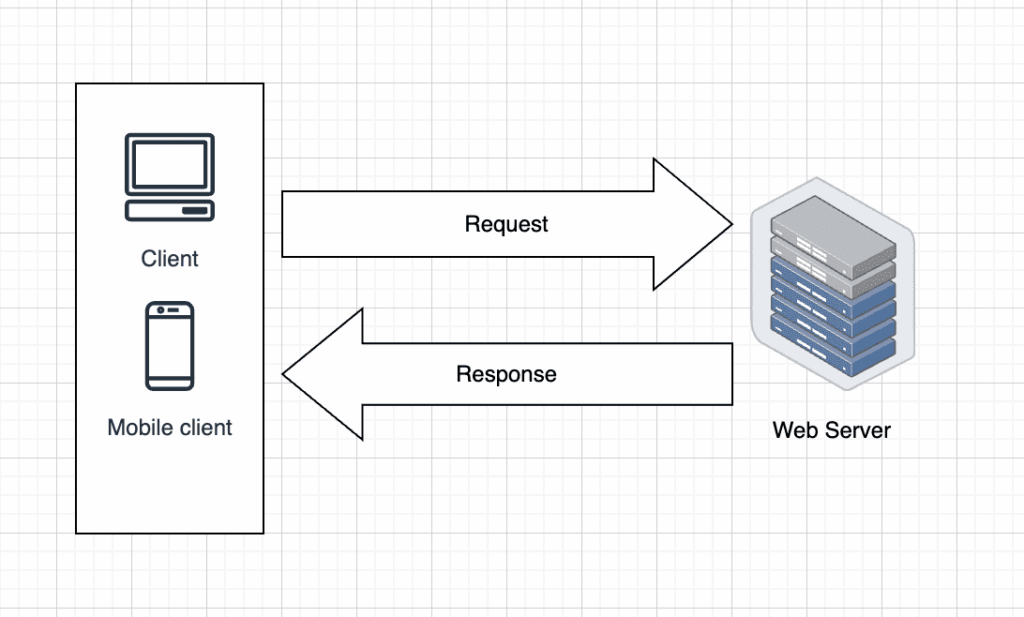Have you ever wondered how the internet works behind the scenes when we open Instagram to see beautiful photos shared by people worldwide, or when we browse YouTube or TikTok to watch exciting moments of others’ lives? How do these texts, images, and videos magically appear before us? Today, we’ll introduce the invisible cornerstone of the internet—the HTTP protocol.
For those born after 2000, the internet may have always been synonymous with mobile apps, where we navigate seamlessly between applications without manually entering URLs. However, many readers have likely visited websites directly by typing addresses. Have you ever wondered why most websites start with https://? Let’s explore these questions step by step as we unveil the HTTP protocol.
HTTP Protocol: The Backbone of Internet Communication
Fetching stunning webpages from servers across the globe, streaming high-definition videos, or interacting with friends in real-time—all these seamless experiences rely on an unsung yet indispensable hero: the HTTP protocol.
The full name of HTTP is Hypertext Transfer Protocol. It defines the rules for transferring data over the network to our local devices, specifying the request-response format between clients and servers.

Any internet-connected device—be it a computer, smartphone, or Nintendo Switch—can act as a client. These clients send requests to web servers, which process the requests and return data in a predefined format.
In simple terms, HTTP is like a language that clients and servers use to communicate. Once both parties agree on the rules, they can exchange information seamlessly, much like how people converse in a shared language.
The Birth of HTTP
The HTTP protocol was born in 1989, conceived by Tim Berners-Lee, the “Father of the World Wide Web,” at CERN (European Organization for Nuclear Research). Initially designed to enable communication for distributed, collaborative, hypermedia information systems, HTTP has far surpassed its original purpose and become the invisible foundation powering the global internet.
How HTTP Works
Imagine searching for information on Google. When you visit Google’s website and enter a keyword, here’s what happens behind the scenes (focusing solely on HTTP, skipping DNS resolution, TCP handshakes, server caching, reverse proxies, etc.):
- The Client Sends a Request
After establishing a stable TCP connection, your browser sends an HTTP GET request to Google’s server. A typical HTTP request consists of three parts:- Request Line: Contains the method (e.g.,
GET), path (URI), and protocol version (e.g.,HTTP/1.1).Headers: Include metadata like browser type (User-Agent), accepted content types (Accept), and language preferences.Body: WhileGETrequests usually lack a body, methods likePOSTorPUTinclude submitted data.
GET /search?q=HTTP HTTP/1.1 Host: www.google.com User-Agent: Mozilla/5.0 (Macintosh; Intel Mac OS X 10_15_7) AppleWebKit/537.36 (KHTML, like Gecko) Chrome/136.0.0.0 Safari/537.36 Accept: text/html,application/xhtml+xml,application/xml;q=0.9,image/avif,image/webp,image/apng,*/*;q=0.8,application/signed-exchange;v=b3;q=0.7 Accept-Language: en-US,en;q=0.9,zh-CN;q=0.8,zh;q=0.7,ko-KR;q=0.6,ko;q=0.5 - Request Line: Contains the method (e.g.,
- The Server Processes the Request
Google’s server parses the request, extracts the search term, retrieves results, and prepares a response. - The Server Returns a Response
The response also has three parts:- Status Line: Protocol version, status code (e.g.,
200 OK), and status message.Headers: Server info, content length (Content-Length), and type (Content-Type).Body: The actual content (HTML, JSON, etc.).
HTTP/1.1 200 OK Date: Sun, 18 May 2025 12:00:00 GMT Content-Type: text/html; charset=UTF-8 Content-Length: 456789 <!DOCTYPE html> <html> <head> <title>Google</title> ... </head> <body> <!-- Google search results HTML --> </body> </html> - Status Line: Protocol version, status code (e.g.,
- The Client Renders the Response
The browser parses the HTML and displays the search results.
Summary of HTTP
At its core, HTTP is a client-server application-layer protocol that standardizes how requests and responses are exchanged over the internet. The workflow is simple:
- Client Sends a Request: Browsers (like Chrome or Firefox) initiate requests for resources (webpages, images, etc.).
- Server Processes the Request: The server’s HTTP daemon (e.g., Apache/Nginx) handles the request, retrieves data, or runs scripts.
- Server Sends a Response: The server returns the resource (or an error like
404 Not Found) with metadata. - Client Displays the Response: The browser renders the content (e.g., HTML) for the user.
What’s Next?
Future articles will dive deeper into:
- HTTP methods (
GET,POST, etc.). - HTTP status codes (
200,404,500, etc.). - Performance optimizations in HTTP/2 and HTTP/3.
Stay tuned for more technical insights!
